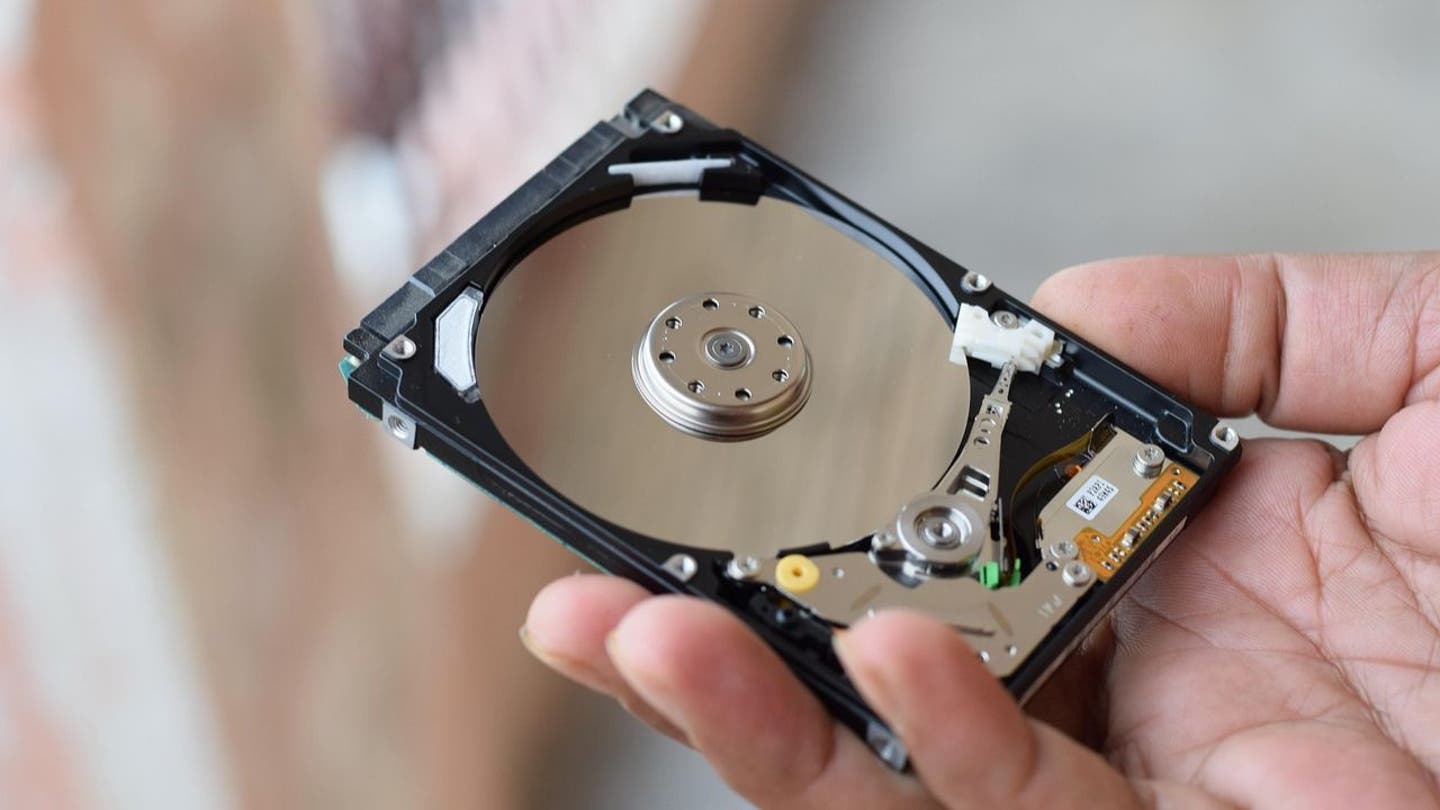Got an old computer collecting dust in a closet or tucked under a desk? You’re not alone. Many people hold on to aging desktops and laptops, either as backup machines or because they still run “just fine.” But here’s the catch: if that PC is no longer receiving Windows updates, it could be a security risk, even if it seems perfectly functional. Janet from East Wakefield, NH, recently wrote to us about this very dilemma:
“We need to update our computer due to Windows 11 not running on our older computer. We have two older computers, one we are upgrading and the second one I would like to continue to use on occasion. Do I run the risk of incursions into my software since I will no longer get security upgrades? Any advice on what I should remove (ie, finance info.)? Also, any advice for the older tower? Runs perfectly with solid state SSD. We are loath to put it into the recycling bin.”
The good news is you don’t have to toss it just yet. With a few smart steps, you can use it safely or transform it into something completely new and useful. Let’s look at how you can breathe new life into your old computer.
JOIN THE FREE CYBERGUY REPORT: GET MY EXPERT TECH TIPS, CRITICAL SECURITY ALERTS, AND EXCLUSIVE DEALS — PLUS INSTANT ACCESS TO MY FREE ULTIMATE SCAM SURVIVAL GUIDE WHEN YOU SIGN UP!
A woman working on her older laptop. (Kurt “CyberGuy” Knutsson)
Why using an unsupported PC can be risky
First of all, once Microsoft stops supporting your version of Windows, your PC no longer receives security patches, bug fixes, updated drivers, or browser support. Even if the system still runs smoothly, it becomes more vulnerable to cyber threats like malware, ransomware, phishing attacks and data theft. An outdated operating system is like an unlocked door. Hackers and malicious software often target these systems specifically because of their weaknesses. If you plan to keep using an older computer, especially with internet access, it’s time to update your operating system.
BEST ANTIVIRUS FOR PCS — CYBERGUY PICKS 2025
How to protect your old PC for occasional use
If you still plan to use your PC occasionally, you can minimize the risks with these simple but effective steps:
1. Use it offline only: The easiest way to stay secure is to keep your old PC off the internet entirely. You can still use it for:
- Word processing
- Organizing archives or photos
- Creative projects
- Offline games or journaling
Without internet access, you remove most external threats.
2. Remove all sensitive data: Even if you’re only using your computer for basic tasks, it’s important to scrub any personal or financial information from the system. That includes:
- Tax documents
- Bank statements
- Saved passwords
- Files with Social Security numbers
- Scanned IDs or legal documents
One effective way to securely wipe all personal files at once is to use the built-in Windows reset option, found under Settings > System > Recovery. This will remove your files and restore the system to a clean state. For step-by-step instructions, check out Microsoft’s guide to resetting your PC.
Once your old PC is wiped, it’s smart to strengthen the security of your active devices. Turn on two-factor authentication (2FA) for your accounts and use a password manager to keep your credentials safe and organized. Get more details about my best expert-reviewed Password Managers of 2025 here.
3. Disable browsers (or use a safer alternative): If you need occasional internet access, avoid using outdated browsers like old versions of Google Chrome or Microsoft Edge. Instead, try privacy-focused alternative browsers. Or better yet? Disable browsers altogether and connect to the web on a newer, supported device.
4. Install strong antivirus software that supports legacy systems: Even an offline PC can be exposed via USB drives or transferred files. The best way to safeguard yourself from malicious links that install malware, potentially accessing your private information, is to have strong antivirus software installed on all your devices. This protection can also alert you to phishing emails and ransomware scams, keeping your personal information and digital assets safe. Before installing antivirus software, make sure your older computer meets the minimum system requirements. Check for supported operating system (OS) version, RAM, and processor architecture (32-bit or 64-bit). Most providers list these on their site. Get my picks for the best 2025 antivirus protection winners for your Windows, Mac, Android and iOS devices
5. Keep important files on external storage: Avoid saving sensitive files directly on the old PC. Instead:
This keeps your data portable, protected and off the aging hardware. That way, your files are safe even if the old computer fails, and you can access them from newer devices anytime.
WHAT IS ARTIFICIAL INTELLIGENCE (AI)?

A man working on his PC. (Kurt “CyberGuy” Knutsson)
TRANSFERRING DATA FROM AN OLD LAPTOP TO A NEW ONE
What about older Macs?
While this guide focuses on Windows PCs, many of the same principles apply to older Macs, especially if your system is stuck on unsupported macOS versions like High Sierra or Mojave. The best way to stay safe is to limit internet use, remove sensitive data, use supported browsers and install reliable antivirus software.
That said, older Macs have a few unique considerations:
- Limited upgrade paths: Apple restricts OS upgrades to certain hardware. You may be locked into an older system unless you install a custom macOS patcher or switch to Linux.
- Tighter integration with Apple services: Be sure to fully sign out of iCloud and disable Find My Mac before wiping or repurposing.
- Fewer repurposing options: While some Macs make great writing machines or media centers, they’re harder to customize or reconfigure than tower PCs because most Apple hardware isn’t designed for self-upgrades. Components like memory or storage are often sealed, soldered or require special tools to access.
WHAT HACKERS CAN LEARN ABOUT YOU FROM A DATA BROKER FILE
Ready for a second life? Here’s how to repurpose it
If the system still has a working tower, especially an SSD (Solid-State Drive), which provides fast storage and efficient performance, it could be perfect for a modern, low-cost makeover.
Option 1: Install Linux for a secure, fresh operating system
Linux is a free, fast, and secure alternative to Windows that works especially well on older computers. It’s still actively supported and great for basic tasks like browsing the web, checking emails, editing documents, streaming videos or even learning to code. You don’t need to be a tech expert to install it, as most versions come with easy, step-by-step installers.
Here are some beginner-friendly Linux versions (called “distributions” or “distros”):
- Linux Mint — Designed to feel familiar to Windows users, with a simple, traditional desktop and lots of built-in help.
- Ubuntu — One of the most popular Linux versions, known for its large support community and extensive online guides, making it easy to find help if you get stuck.
- Zorin OS — Offers a polished, modern look that resembles Windows or macOS, making it ideal for casual users or anyone switching from those systems. It even helps you run some Windows programs and provides a very user-friendly experience.
For example, Zorin OS lets you choose a desktop layout that looks like Windows, so you don’t have to relearn everything. Ubuntu is famous for its reliability and the huge number of tutorials available online, which is helpful if you’re new to Linux.
And yes, you really can install these yourself, even if you’ve never tried Linux before. This beginner’s guide to installing Linux Mint walks you through the entire process.
Option 2: Turn it into a home server or backup station
Your old PC can become the backbone of your home network. A few creative uses:
- Media center — Stream content to your TV
- Photo/video archive — Store backups and organize family memories
- Local file backup server — Save copies of important files from other devices at home
- Print or file server — Share printers or storage across devices
This keeps your old machine useful without needing daily interaction.
Option 3: Selling your PC
Before you get rid of your old PC, consider whether selling or recycling is the best fit for you. Both options are eco-friendly and can be rewarding if done right. Here’s how to handle your PC responsibly:
- Back up and wipe data: Save your important files to an external drive or cloud storage. Then, use secure data-erasing software to completely wipe your PC, ensuring your personal information is unrecoverable.
- Remove accounts and reset: Log out of all accounts, deactivate software licenses and perform a factory reset so the next owner starts fresh.
- Selling your PC: If your PC is in good condition, consider selling it through reputable platforms such as Amazon Trade-In, eBay, or local electronics stores. These options can put cash or gift cards in your pocket. Always be cautious of scams, use secure payment methods and avoid sharing unnecessary personal details.
Option 4: Donate or responsibly upcycle
If you’re done with it, let someone else benefit:
- Schools, nonprofits and senior centers often accept working devices.
- Buy Nothing or Freecycle groups can help you find a local taker.
- Some e-waste centers refurbish old PCs for families in need.
Be sure to wipe the hard drive before donating. Consider using a data erasure tool or disk-wiping software to securely erase the entire hard drive. However, always back up any important files before wiping your drive. Always, confirm that you are targeting the correct storage device during the process to avoid accidental data loss. If you’re unable to securely erase sensitive materials from your hard drive, consider removing the drive before donation and recycling it separately.
GET FOX BUSINESS ON THE GO BY CLICKING HERE

Solid-State Drive. (Kurt “CyberGuy” Knutsson)
BEST DESKTOP COMPUTERS FOR 2025
Simple upgrades that can extend its life even further
If you’re keeping the machine and want to get the most out of it, a few basic hardware upgrades can go a long way, even on an older system. These are budget-friendly fixes that can significantly improve speed, stability and longevity.
1. Add more RAM: If your system has 4GB or less, upgrading to 8 GB+ can significantly improve multitasking and responsiveness, especially with Linux. Look up your PC’s model number on the manufacturer’s website to find compatible memory. Many desktops (and some laptops) let you upgrade RAM by simply opening the case and inserting the new memory sticks into available slots.
2. Upgrade to an SSD: If you’re still using a traditional hard drive, switching to a solid-state drive can dramatically reduce boot times and make your PC feel brand new. For most older machines, look for SSDs labeled “2.5-inch SATA”, which are the most widely compatible and easy to install. Some newer systems support faster NVMe SSDs, which connect directly to the motherboard. Check your PC model or open the case to see which type your system supports. Be sure to back up your files, then either reinstall the operating system manually or clone your current drive before replacing it.
3. Clean out the dust and refresh thermal paste: Older desktops tend to overheat, which can slow things down or cause random shutdowns. Open up the case and:
- Use compressed air to clean fans and vents
- Consider replacing the thermal paste on the CPU if it’s been several years
4. Swap out the battery or power supply: If your laptop battery no longer holds a charge, or if your desktop randomly shuts off, consider replacing the battery or power supply unit.
Kurt’s key takeaways
Just because a computer is old doesn’t mean it’s useless. Whether you’re turning it into a writing station, a media server, or giving Linux a try, your old PC can still be a valuable tool. The key is security. Unsupported systems can be risky if used online, but with a few precautions or by repurposing them entirely, you can keep your data safe and extend the machine’s life in meaningful ways.
CLICK HERE TO GET THE FOX NEWS APP
Have you repurposed an old PC? We’d love to hear what you’re doing with your older tech. Let us know by writing us at Cyberguy.com/Contact
For more of my tech tips and security alerts, subscribe to my free CyberGuy Report Newsletter by heading to Cyberguy.com/Newsletter
Ask Kurt a question or let us know what stories you’d like us to cover.
Follow Kurt on his social channels:
Answers to the most-asked CyberGuy questions:
New from Kurt:
Copyright 2025 CyberGuy.com. All rights reserved.

